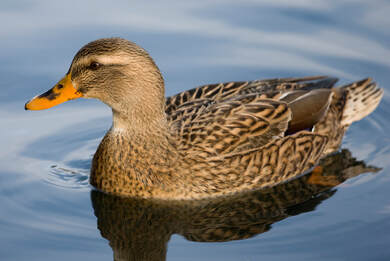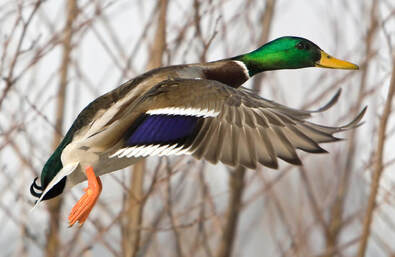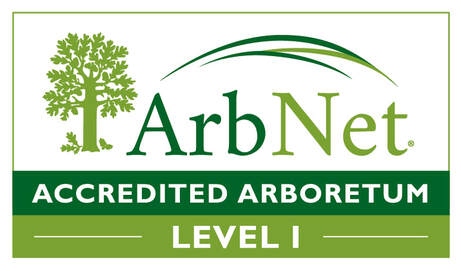Domestic Duck (Mallard)

Common Name: Domestic Duck (Mallard)
Scientific Name: Anas platyrhynchos domesticus[1]
Physical Description: A subspecies of the mallard that was domesticated by humans, the Domestic Duck (Mallard), was bred for selective traits including white within its feathers. The wild-type Domestic Duck (Mallard) male has a vibrant green head, brown breast, and a silver body and wings, with hints of brown in it. The wings also hold a bright blue-purple patch on their speculum, a region on their secondary feathers. The wild-type Domestic Duck (Mallard) female has a light tan head, and a darker tan and brown body with white highlights. They also have a purple-blue patch on their speculum. The Domestic Duck (Mallard) has been bred to increase the levels of white within the feathers, with some almost entirely white[2]. Their webbed feet serve as a paddle to help propel them through the water, and their wide, flat beak helps to scoop food up from the water when feeding in water.
Habitat: The Domestic Duck (Mallard) lives in both permanent and seasonal, or vernal, wetlands including ponds, streams, floodplains, rice fields, marshes, and estuaries. They will typically nest on dryland; however, they will occasionally nest on floating vegetation within a wetland[3].
Range: North America, Europe, and Asia
Diet: Seeds, aquatic vegetation, insects, snails, grain, freshwater shrimp
Life Span: 5-10 years
Social Structure: Domestic Ducks (Mallards) flock together and congregate for safety and during the breeding season.
Status: Not Applicable
Other: The Domestic Duck (Mallard) is a common ornamental species in parks and public settings, as well as in private home settings and farms.
[1] https://www.iucnredlist.org/species/22680186/166199836
[2] https://www.birds.cornell.edu/crows/domducks.htm
[3] https://www.allaboutbirds.org/guide/Mallard/lifehistory
Scientific Name: Anas platyrhynchos domesticus[1]
Physical Description: A subspecies of the mallard that was domesticated by humans, the Domestic Duck (Mallard), was bred for selective traits including white within its feathers. The wild-type Domestic Duck (Mallard) male has a vibrant green head, brown breast, and a silver body and wings, with hints of brown in it. The wings also hold a bright blue-purple patch on their speculum, a region on their secondary feathers. The wild-type Domestic Duck (Mallard) female has a light tan head, and a darker tan and brown body with white highlights. They also have a purple-blue patch on their speculum. The Domestic Duck (Mallard) has been bred to increase the levels of white within the feathers, with some almost entirely white[2]. Their webbed feet serve as a paddle to help propel them through the water, and their wide, flat beak helps to scoop food up from the water when feeding in water.
Habitat: The Domestic Duck (Mallard) lives in both permanent and seasonal, or vernal, wetlands including ponds, streams, floodplains, rice fields, marshes, and estuaries. They will typically nest on dryland; however, they will occasionally nest on floating vegetation within a wetland[3].
Range: North America, Europe, and Asia
Diet: Seeds, aquatic vegetation, insects, snails, grain, freshwater shrimp
Life Span: 5-10 years
Social Structure: Domestic Ducks (Mallards) flock together and congregate for safety and during the breeding season.
Status: Not Applicable
Other: The Domestic Duck (Mallard) is a common ornamental species in parks and public settings, as well as in private home settings and farms.
[1] https://www.iucnredlist.org/species/22680186/166199836
[2] https://www.birds.cornell.edu/crows/domducks.htm
[3] https://www.allaboutbirds.org/guide/Mallard/lifehistory







